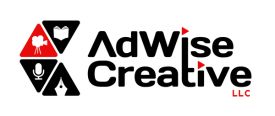
How Much Does a Content Creator Cost? DIY vs DFY
Key Takeaways
DIY looks cheaper but eats up your time and energy.
Done-for-you services usually cost $200–$500 per article (freelancers, agencies, packages).
DIY = hidden costs like wasted SEO research, image creation, and staying consistent.
DFY = higher upfront spend but faster scaling and less stress.
Content is an investment. It keeps working long after you publish.
Introduction
If you’ve ever Googled how much does a content creator cost, you know the answers are all over the place. Some people say $50, others $5,000.
So what’s the real story?
It depends on whether you go DIY or Done-for-You (DFY). I’ve done both — for myself and for clients. Let’s walk through the numbers, the trade-offs, and when each option makes sense.
What Goes Into Content Creation Costs?
Before we compare, let’s break down what you’re actually paying for.
First, there are tools and software. Even the simplest content strategy usually requires subscriptions to tools like Canva, Grammarly, a scheduling platform, and some type of SEO software. These might look inexpensive on the surface, but add them all up and you’re easily looking at $50–$150 a month just to get started.
Second, there’s the time and skills required. Content creation isn’t just writing. It’s researching what your audience cares about, outlining a post, drafting it, editing it, creating visuals, publishing it, and often promoting it afterward. Each step takes time, and if you don’t have the skills yet, there’s also a learning curve.
Finally, you need a strategy. Without clarity on what to publish, when to post, and how to get traction, even good content falls flat. Strategy is often the hidden factor that separates the people who see results from those who spin their wheels.
DIY Content Creation Costs

I know DIY well — I do it for myself. I research, write, and post twice a week, every Monday and Thursday. After about two months (14 articles), I finally started to see growth.
But here’s the thing: DIY is full of hidden costs that don’t show up in your bank account but will drain your time.
For example, SEO research. More often than not, I’ll dive into keyword tools only to end up at a dead end. The data doesn’t match, or the phrase has no search volume, or it’s so competitive it’s impossible to rank. That means I start over — and over again. It’s frustrating, and it eats hours I could be spending on higher-value work.
Another sneaky cost is images. I underestimated how long it would take to find, edit, and format visuals for every blog. Sometimes creating the right image takes almost as long as writing the article. It’s not just a “nice to have.” Without images, posts look bare and don’t perform as well.
And then there’s consistency. DIY requires discipline. If you miss a week or two, momentum slips. Publishing consistently is the hardest part — and the one most people underestimate.
So while DIY looks cheaper on paper, it’s actually a major time investment. If your time is valuable (and it is), the true cost is much higher than most expect.
Done-for-You Content Costs

Now let’s look at outsourcing.
At the lowest level, you can hire a freelancer on Fiverr for $20–$50 per blog post. These can work if you need something quick and aren’t worried about depth or SEO. But for most businesses, this isn’t enough.
Professional freelancers with experience charge closer to $200–$500 per article. That price usually includes proper research, writing, and optimization. Some charge per word, while others price per project. The difference often comes down to skill level and expertise in your industry.
Agencies take it a step further. Instead of just the writing, you’re paying for a package: strategy, research, content calendars, editing, images, and often publishing. Agency retainers can run from $1,000–$5,000 a month, depending on volume and scope. The upside is you’re not managing multiple freelancers or worrying about consistency. You get a system.
Here’s the challenge: expectations. Many clients assume outsourcing means instant results. They picture going from 0 visitors to 5,000 overnight. But that’s not how content works. Whether DIY or DFY, results compound slowly. The difference is DFY removes the workload from your plate so you can focus elsewhere.
Real-World Example: In my own Content Creation Call package, clients get 25+ videos, 4 podcast episodes, and 4 blogs each month for $4,897. Compared to hiring piecemeal freelancers, it costs more upfront — but it gives you a full content machine with strategy, production, and publishing built in.
DIY vs DFY: Price Comparison

Here’s what a typical monthly cost looks like:
DIY (your time + tools)
SEO software: $30–$100/month
Design tools: $15–$50/month
Your time: 10–20 hours/month (at $50/hour, that’s $500–$1,000 of hidden cost)
Done-for-You (freelancer/agency)
$200–$500 per article
$800–$2,000+ per month depending on scope
At first glance, DIY looks cheaper. But when you put a dollar value on your time, DFY often isn’t much more — and in many cases it’s actually the smarter financial decision.
What Drives Content Costs Up or Down?
There’s no single “standard” cost because several factors affect pricing.
Topic complexity. Writing about fitness tips is much easier than writing about enterprise cybersecurity. Niche or technical industries require more research and expertise, which drives up cost.
Word count. A 500-word blog post is very different from a 2,500-word guide. More words = more hours = higher price.
Level of expertise. Generalist writers charge less, but if you need someone with years of industry experience, expect higher rates. That’s because they bring not just writing skills but subject-matter authority.
Understanding these factors helps you evaluate whether a quote is fair.
What’s the Risk of Cutting Corners?
The biggest risk is paying for cheap content that doesn’t perform.
Low-cost writers often deliver generic or AI-spun articles that sound fine but don’t rank, don’t build trust, and don’t convert. You might save money upfront, but you lose far more in missed opportunities.
Poor content can also hurt your brand. Readers can tell when something feels generic or rushed. It creates the opposite of what you want: less trust instead of more.
Investing in quality content is about more than just words on a page — it’s about credibility, authority, and results.
Is Content Creation Worth the Cost?

Here’s why I believe the answer is yes: content keeps working long after you publish.
I’ve got videos from over two years ago still bringing me new clients every single month. Content stacks, compounds, and pays off for years.
The “aha moment” for most people comes when they see dozens of posts pulling in traffic. Then one reader reaches out and becomes a client. Suddenly, it all makes sense.
FAQs
How much does a content creator charge per post?
Anywhere from $50 on Fiverr to $500+ for professional, SEO-driven content.
Is DIY content cheaper than hiring an agency?
Yes upfront. But when you factor in your time, DIY often costs just as much — or more.
What’s included in a DFY content package?
Usually research, writing, editing, SEO optimization, and publishing. Some add images, video, or promotion.
How long before content starts driving results?
If you’re consistent, you might see traction after 2–3 months. Big growth often takes 6–12 months.
Do DFY packages include images and SEO research?
The best ones do. Always ask before you sign, because many cheap options cut corners here.
Conclusion
DIY and DFY both come with costs. One eats up your time, the other eats up your budget. The key is knowing which resource you want to invest.
By the way, if you’d like to see more of what I’m teaching inside my Skool group — from SEO basics to building a blog strategy that actually works — click here to check it out. ✅


